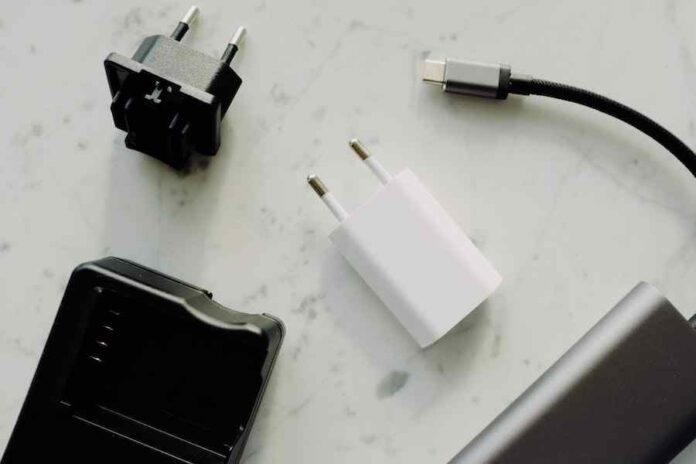The question of “What adapter do I need for Italy?” is a common concern for travelers preparing to explore the beautiful country. Understanding Italy’s unique electrical system and plug types is essential to ensure your electronic devices stay powered throughout your journey. This comprehensive guide will provide you with the knowledge and recommendations needed to make the right adapter choices, helping you stay connected and charged while enjoying all that Italy has to offer. Whether you’re a tech-savvy traveler or someone looking for basic information, this article has got you covered.
What Adapter Do I Need For Italy?
For Italy, you’ll need a Type L plug adapter. Italy uses a unique plug type with three round pins in a row. Make sure your electronic devices are compatible with Italy’s voltage (230V) and frequency (50Hz) to avoid damage or malfunctions. Consider carrying a universal adapter or voltage converter for added convenience and flexibility during your trip.
Why Adapters Are Necessary For International Travel?
Adapters are necessary for international travel primarily due to differences in electrical sockets and voltage standards between countries. Here’s why:
- Socket Types: Different countries have various plug socket designs, making it impossible to directly plug in your devices without the correct adapter.
- Plug Compatibility: Adapters allow you to convert your device’s plug to fit into the local sockets, ensuring a secure connection.
- Voltage Variations: Countries often have different voltage standards, and using a device with the wrong voltage can lead to damage or even safety hazards. Voltage converters or transformers may also be needed.
- Convenience: Adapters and converters make it convenient to use your devices and appliances, from charging your phone to using a laptop, while traveling internationally.
- Safety: Using the right adapters and converters reduces the risk of electrical accidents and ensures your devices function properly abroad.
Italy’s Electrical System
Italy’s electrical system operates on a voltage of 230 volts and a frequency of 50 Hertz. Here’s a breakdown of Italy’s electrical system:
- Voltage: Italy uses a voltage of 230V, which is higher than the standard 120V used in North America. Travelers from countries with lower voltages need to be aware of this difference to avoid damaging their electronic devices.
- Frequency: The frequency in Italy is 50Hz, which is standard in most European countries. This frequency is different from the 60Hz used in North America. While it generally doesn’t impact most electronic devices, it’s essential to check for compatibility with devices that rely on frequency-sensitive components like clocks.
- Plug Types: Italy uses unique plug types, primarily Type L. Type L plugs have three round pins arranged in a row. Travelers will likely need a Type L adapter to fit their devices into Italian sockets.
- Socket Compatibility: Italian sockets are typically designed to accommodate both Type C and Type L plugs. However, not all sockets may be compatible with Type C plugs, which have two round pins, so having a Type L adapter is advisable for a secure fit.
Types Of Adapters For Italy
When traveling to Italy, it’s essential to have the right adapter to plug in your electronic devices. Italy uses a unique plug type (Type L) with three round pins in a row. Here are the types of adapters you can consider for Italy:
- Plug Adapters: These adapters are the most basic and commonly used for travelers. They allow you to physically adapt your device’s plug to fit into Italian sockets. Make sure to get a Type L plug adapter for Italy.
- Universal Adapters: Universal adapters are versatile and compatible with multiple plug types, making them suitable for use in Italy and various other countries. They often have adjustable pins or multiple plug options, making them a convenient choice for international travelers.
- Voltage Converters and Transformers: While not technically adapters, voltage converters, and transformers can be necessary if your devices are not compatible with Italy’s 230V voltage. These devices can step up or down voltage levels to match the requirements of your electronics. They are especially crucial for appliances like hair dryers and curling irons.
- Surge Protectors and Power Strips: These devices offer additional protection for your electronics. Surge protectors can safeguard your devices from voltage spikes, while power strips allow you to charge multiple devices simultaneously using a single adapter.
- USB Adapters: If you have USB-powered devices like smartphones or tablets, consider getting a USB adapter that plugs into a Type L socket. This way, you can charge your devices directly through USB cables without needing separate plug adapters.
How To Choose The Right Voltage Converter Or Transformer?
Choosing the right voltage converter or transformer is crucial when traveling to a country with a different voltage standard than your own, such as Italy’s 230V system. Here’s a step-by-step guide on how to make the right choice:
- Check Your Device’s Voltage Requirements: Examine the label or user manual of the electronic devices you plan to use in Italy. Look for the voltage specification. Most devices have a label that indicates a voltage range (e.g., 100-240V), meaning they are compatible with a variety of voltage levels.
- Determine the Converter or Transformer Type: Voltage Converters: These devices step down or step up voltage levels to match the requirements of your devices. If your device is incompatible with Italy’s 230V and falls outside the voltage range specified on the label, you’ll need a voltage converter.
- Voltage Transformers: Transformers are generally more substantial and designed for higher-wattage appliances, such as hair dryers or curling irons. Transformers can handle a wider range of devices and often offer multiple output voltage options.
Calculate the Wattage:
- Determine the wattage of your device. This information is usually found on the label or in the user manual. Ensure that the converter or transformer you choose can handle the wattage of the device you intend to use. It’s advisable to choose a converter or transformer with a wattage capacity that exceeds your device’s requirements to avoid overloading.
Tips For Using Adapters Safely In Italy
Using adapters safely in Italy, or any foreign country is essential to prevent damage to your devices and ensure your safety. Here are some tips for using adapters safely in Italy:
- Research and Prepare in Advance: Before your trip, research Italy’s electrical system, plug types, and voltage to understand what adapters or converters you’ll need for your specific devices.
- Use the Right Adapters: Ensure you have the correct Type L plug adapters for Italy. Using the wrong plug type may result in a loose connection or damage to your devices.
- Check Device Compatibility: Verify that your electronic devices can handle Italy’s voltage (230V) and frequency (50Hz). Look for the voltage compatibility information on the device’s label or in the user manual.
- Use Voltage Converters or Transformers When Necessary: If your device is not compatible with Italy’s voltage, use a voltage converter or transformer to avoid damage. Ensure the converter or transformer can handle the wattage of your device.
- Avoid Overloading Circuits: Be mindful not to overload the electrical circuits by connecting too many high-wattage devices to a single adapter or converter. Consider using a power strip with surge protection for multiple devices.
- Use Surge Protectors: Consider using surge protectors with built-in voltage protection for added safety. This helps safeguard your devices from voltage spikes, which can occur in some locations.
- Inspect Adapters and Cords: Regularly inspect your adapters, converters, transformers, and power cords for signs of wear or damage. Replace any damaged components to prevent electrical hazards.
- Follow Manufacturer Guidelines: Adhere to the manufacturer’s instructions and guidelines provided with your adapters, converters, and transformers. This ensures proper usage and safety.
Final Word
In conclusion, understanding Italy’s electrical system and choosing the right adapters and converters is essential for a safe and enjoyable trip. Taking the time to research, prepare, and follow safety guidelines will help you keep your devices powered while avoiding potential electrical hazards. Traveling with the right equipment not only ensures convenience but also contributes to a worry-free and memorable experience in the beautiful country of Italy.
FAQ’s
Can I Use My U.S. Devices In Italy Without An Adapter?
- No, Italy uses a different plug type (Type L) and voltage (230V) than the U.S. (Type A/B, 120V). You’ll need a Type L adapter and may require a voltage converter or transformer.
- Do All Devices Need A Voltage Converter In Italy?
No, many modern devices are dual-voltage (100-240V) and only require a plug adapter for Italy.
- Can I Charge My Smartphone In Italy With A Universal Adapter?
Yes, most smartphones are compatible with universal adapters and can be charged in Italy using one.
- Are Surge Protectors Necessary In Italy?
They’re not mandatory but can provide added protection for your devices against voltage spikes.
- Where Can I Buy Adapters In Italy?
Adapters can be found in electronics stores, travel shops, and even some convenience stores in major Italian cities.





